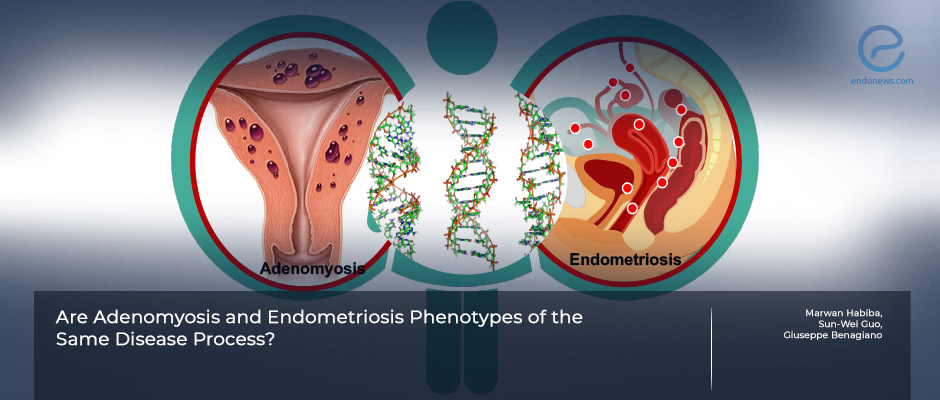Endometriosis vs. adenomyosis : is there a common pathogenesis ?
Mar 4, 2024
Endometriosis and adenomyosis seem to undergo identical molecular events
Key Points
Highlights:
- The common gynecologic disorders, endometriosis and adenomyosis remain largely unresolved in their pathophysiology.
- The association between two diseases has been emphasized in instances of mutual existence, particularly in patients with infertility.
Importance:
- It is not resolved whether endometriosis and adenomyosis are two phenotypes of the same disease or whether these two conditions have a shared origin or starting point.
What's done here:
This is a comprehensive review of PubMed with search items as:
- adenomyosis+etiology or pathophysiology
- endometriosis+etiology
- pathophysiology combination of (a)+(b)
- adenomyosis+incidence or prevalence
- endometriosis +incidence or prevalence; and
- combination of (d)+(e).
Key features:
- Both endometriosis and adenomyosis seem to undergo identical molecular events, like epithelial–mesenchymal transition, fibroblast-to-myofibroblast transdifferentiation, smooth muscle metaplasia, and fibrogenesis.
- The finding of common mutations in endometriosis and adenomyosis, especially of KRAS, lend support to the view of shared predisposition, but this is inadequate for any common causative factor.
Take home message:
Important unresolved questions remain for the hypothesis of adenomyosis and endometriosis being a single disease with common pathophysiology, however, it seems clear that adenomyosis is not simply endometriosis of the uterus.
Lay Summary
This is a collaborative review on the pathophysiology of adenomyosis and endometriosis by academicians of the University of Leicester, UK; Fudan University, Shanghai, China and Sapienza University of Rome, Italy, published in a recent issue of “Biomolecules”.
The pathophysiology of endometriosis and adenomyosis remain still unresolved but a critical analysis of our current understanding is crucial. The so-called “endometrial determinism” theory is based on the hypothesis of abnormal endometrium as a predisposing factor for endometriosis whereas the tissue injury and repair theory suggests that adenomyosis and endometriosis are two phenotypes of the same disease.
The authors have made a comprehensive review of PubMed, and this search finally revealed a total of 36 articles to be reviewed in full text, besides the reference lists of all papers eligible for review were checked for related publications. There are important dilemmas that remain against the hypothesis of adenomyosis and endometriosis being a single disease with common pathophysiology. There are some common features in clinical presentations however, symptoms such as pain and abnormal menstruation may be present in the absence of identifiable disease.
Taking into consideration that uterine affection with adenomyosis varies in its extent and depth, and endometriosis varies widely in its extent and the exact organ(s) affected, raises the question of whether subtypes of endometriosis and adenomyosis have different etiopathologies, and finally this opposes whether all share a common etiology. In this regard data on epithelial-mesenchymal transition-induced adenomyosis, is suggestive of multiple causes for adenomyosis.
Both endometriosis and adenomyosis seem to undergo identical molecular events, like epithelial–mesenchymal transition, fibroblast-to-myofibroblast transdifferentiation, smooth muscle metaplasia, and fibrogenesis. The most significant pathogenetic common factor is the finding of common mutations, particularly of KRAS, in adenomyosis and endometriosis however, it is insufficient for a shared causation.
Important unresolved questions remain for the hypothesis of adenomyosis and endometriosis being a single disease with common pathophysiology, however, it seems clear that adenomyosis is not simply endometriosis of the uterus.
Research Source: https://pubmed.ncbi.nlm.nih.gov/38254632/
adenomyosis endometriosis pathogenesis KRAS

